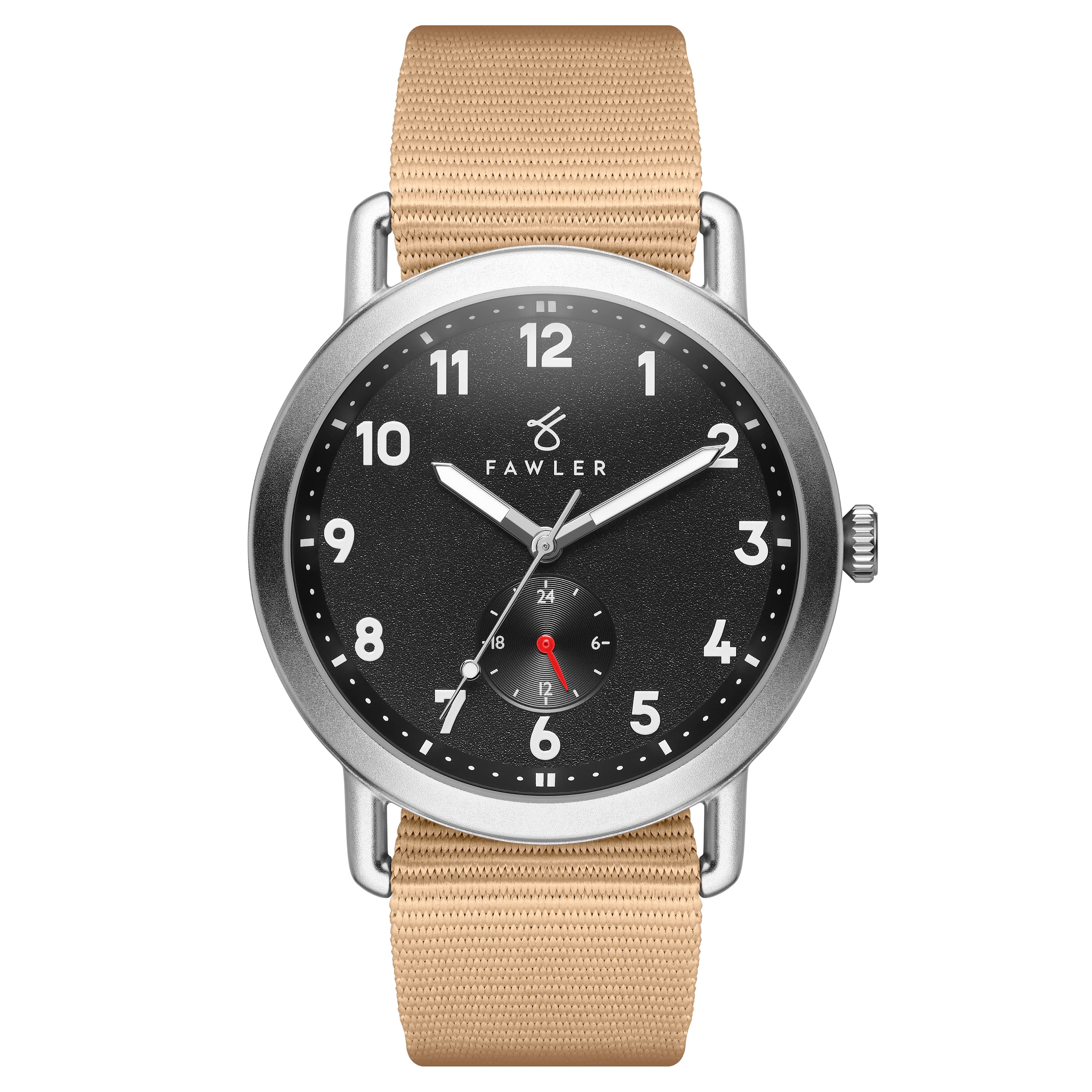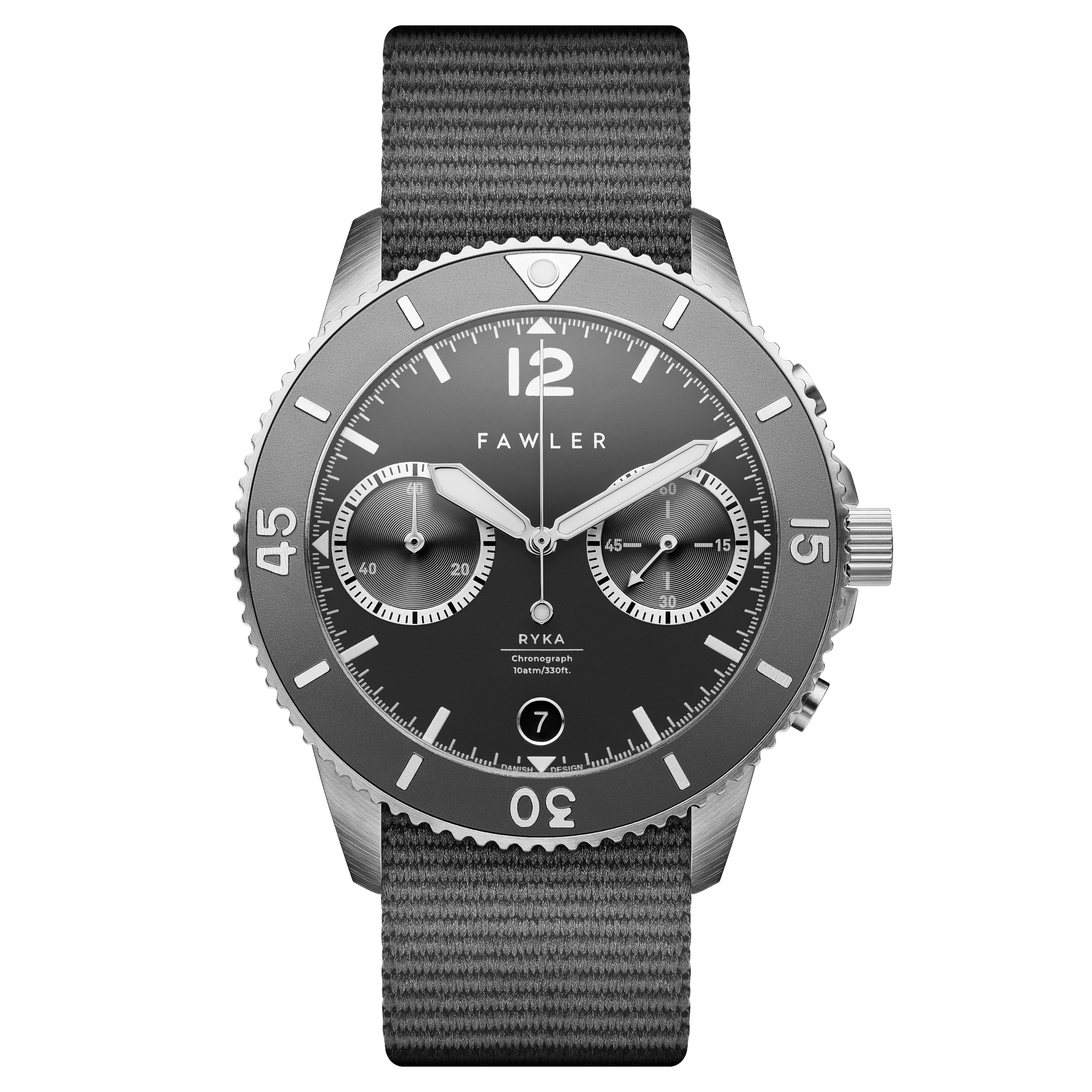How to Wear a Men’s Watch with Style
Level-up your watch game by learning how to wear yours the right way. From dress watches to casual ones, this comprehensive guide breaks down the must-knows for an instant style upgrade.
You know how a belt should match your shoes? It’s sort of the same deal with watches.
Obviously, the rules apply mostly to formal events. Technically, you’re free to wear a watch with any clothes (footwear included) as you please. But for those who appreciate good etiquette and style, matching your watch to your outfit can sort the men from the boys.
Remember – a watch is an accessory. It should enhance your look, not dominate it.
How to Match a Watch to Your Outfit
Matching your watch to your outfit needn’t be complicated – it’s a matter of thinking like-for-like.
Match up your metals – silver with silver, gold with gold. Take note of the metal elements of your outfit – buckles on your belt and shoes, your rings, cufflinks – and match them with your watch.
The watchband is also important. Like belts and shoes, leather watch bands should match other leathers in your attire. A brown leather watchband is worn with brown leather shoes and belt. A black band means a black belt and shoes.
The same applies to the style of the shoes. Dress shoes work best with a dress watch, while trainers look good with a sports watch.
Light-coloured faces are often reserved for day wear, while grey, khaki, black or brown faces are well-suited for evening attire.
On which wrist should a man wear his watch?
Some sources say that a man should wear his watch on his less dominant hand.
If you’re right-handed, wear your watch on the left hand, and vice versa. The logic here is that the watch will not be moved around as much, which may maximise its lifespan. It also means you’ll still be able to check the time while using your dominant hand for other activities… like scrolling through this article.
Traditionally, a watch should be worn loosely enough to allow full use of your wrist. The face should sit next to your ulna (the bone on the outside of the wrist). Your watch shouldn’t poke out from beneath your shirt cuff when you’re standing comfortably. It should only appear when your arm is bent.
The one oh-no-he-didn’t is wearing your watch over your shirt cuff. Just. Don’t.
Watch Style Types
Dress Watch/Luxury Watch
Field Watch

Sports Watch/Dive Watch
Aviator Watch/Pilot Watch
Digital Watch
Party Chatter: The History of Men’s Watches
Although wristwatches have been around since the 18th century, they were originally considered a feminine accessory and worn almost solely by women.
Men didn’t miss out as pocket watches were all the rage. These handsome little timekeepers were (as the name suggests) carried in the pocket, and secured to the waistcoat, lapel, or belt loop with a chain or leather strap.
The shift from pocket watch to men’s wristwatch began when a London company created the first ‘watch wristlet’ design in 1893, but the trend didn’t kick off until the early 20th century. The advent of war was a good enough reason to wear a timekeeper on one’s wrist. War is no place to be groping about in your pocket to check the hour. Soldiers needed to synchronise their movements in battle.
Enter the wristwatch. Functional, fashionable and full of potential.
As per their military application, the first wristwatches for men were known as a ‘trench watch’. They featured the classic round shape of pocket watches with a hinged back and front cover. However, they were able to be worn on the wrist with a thick wire attachment.
Considering the speed at which technology develops today, men’s wristwatches have made rather slow progress. Mechanical watches were the only choice until 1923 when John Harwood invented the first self-winding watch. It wasn’t until the 1950s that electronic watches were created, followed by the quartz watch in the 1970s.
Style, of course, is much more dynamic. The classic leather-and-metal men’s watch may reign, but there’s an enormous variety of shapes, colours, materials and whatever else you fancy available... like this super trendy watch in the video below. You'll never look at the time the same way again.
Showing Sage Ambitio Watch
You Asked – We Answered
Can the bracelet or strap of a watch be interchangeable?
Some modern watches have been designed with the option of changing the strap. Great if you like having a lot of variety in your day-to-day wear, or if you can’t bear the thought of not matching your watch strap to your other colours.
Check for straps with quick-release or quick-change pins. These pop in and out with ease and give you styling options.
What are the best watches to wear with a suit?
Suitwear is generally for formal occasions, right? Here’s where you’ll want to whip out your dress watch.
Give some thought to colours. Most dress watches work well with a navy or black suit. A dress watch with a black leather strap and a silver case, for example, is a charming match for dark tones, while a silver strap and face are great with a white shirt and black jacket.
Grey suits work well paired with an all-black watch, or even lighter-coloured watch face and brown strap.
Don’t be afraid to experiment! A coloured strap can add a bit of character to a dark suit.
What are the rules for checking or showing your watch in public?
You may have heard that checking your phone while on a date or in a meeting is rude. Well, it is… and so is checking your watch.
Glancing at your wrist for no apparent reason can suggest to your company that you’re otherwise occupied and/or looking to escape. So, unless the situation calls for it, good manners dictate you should only check your watch in private.
What is a minimalist watch?
A minimalistic watch is a watch designed to do little more than tell the time. No complications, no fancy bells and whistles.
In this sense, a minimalist watch could be called the contemporary version of the original 19th-century pocket-watch – unadorned and reliable keepers of time. Full stop.
How is a man’s watch different than a lady’s watch? How can you tell the difference?
It’s worth mentioning that men’s watches are generally distinguished from women’s by size – women’s watches are smaller than men’s, with finer features.
Gent’s watches also tend to have more ‘gadgets’ such as complications. Some women’s watches are more ornamental, featuring precious stones or other decorative features.
What are some tips and guidelines for choosing a men's dress watch?
Considering a dress watch is the one you’ll want to complement the outfit you wear for business or formal occasions, you’ll want it to look good with a suit. These simple tips should steer you in the direction of suave over sporty:
- Size – Dress watches should be slim enough to slip under the cuff of your dress shirt.
- Band – Leather is your safest bet for a dress watch. It’s elegant, sophisticated and timeless.
- Face – Simple is best for dress. A white watch with roman numerals is common, but variations abound.
- Case – Round, square or rectangular. The shape doesn’t matter as long as the case is gold- or silver-tone.
What kind of watch goes with everything?
Like shoes, there are times and places that require a certain style of watch. You wouldn’t show up to a business meeting in trainers nor would you wear an oversized military watch that pokes out of your business shirt.
But if business meetings aren’t your typical domain, is it possible to have one watch that works with everything? Yes. And that’s your dress watch.
A dress watch is as stylish as it is versatile. It’s your go-to for formal occasions (think weddings, job interviews, a first date) but also works well with jeans and a t-shirt on the weekend. And if you’re only going to wear one watch, you might as well splash out a little on a good one.
Is it okay for a man to wear a woman's watch?
You can wear whatever you want. Of course, it must be said that there is some degree of masculinity and femininity in gendered watches.
A woman’s watch is typically slimmer and more delicate than a man’s watch. A woman can wear a man’s watch and it may appear ‘feminine’ – but a man wearing a woman’s watch is unlikely to appear more masculine. It is up to you whether that’s an issue or not.
Are expensive watches for men worth buying?
This is totally down to the buyer. Do you need one watch, or ten? Do you have the budget for a particularly expensive watch? Will you wear it forever, or just on special occasions?
The cost of a watch could mean anything from the workmanship that’s gone into the tiny mechanisms, the purity of the metal, the diamonds on the hands, or simply the name of the designer. Do your research to ascertain what you’re paying for and whether you’re okay with that.
How do colours matter when wearing a watch?
Matching the colour of your watchband and face might seem like more work than necessary, but it all comes off nicely when done right.
If you really can’t be bothered, choose a white-faced watch. White goes with anything. Otherwise, at least try to match the colour of your watch band to your shoes. A brown or black leather watch strap goes with brown or black leather shoes.
How do I wear my watch with other jewellery?
Here’s where size matters. If you’re wearing a small, narrow watch, don’t pair it with a bulky bracelet. The combination will look lopsided. The same concept applies to metal colours. Remember, like for like – don’t wear a gold bracelet with a silver-tone watch and cufflinks.























